Option Strategies
Bullish Strategies
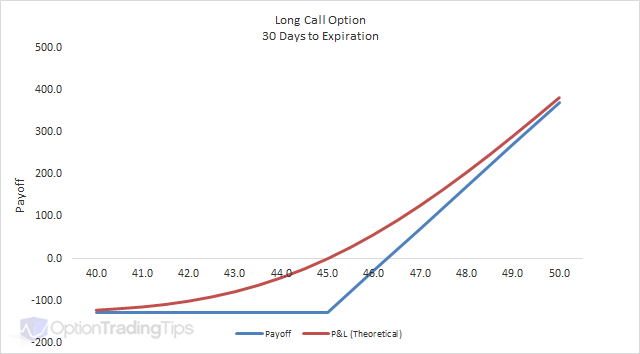
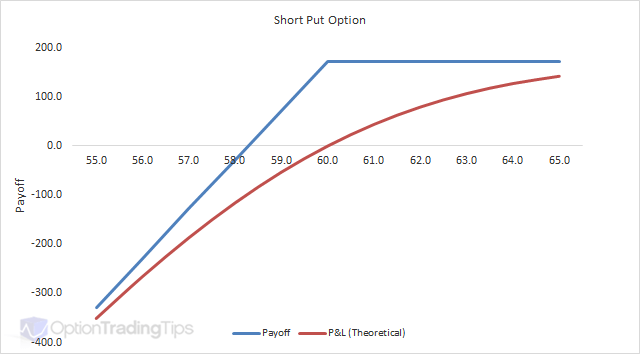
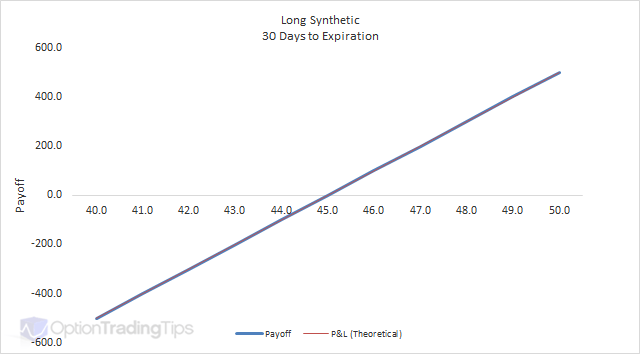
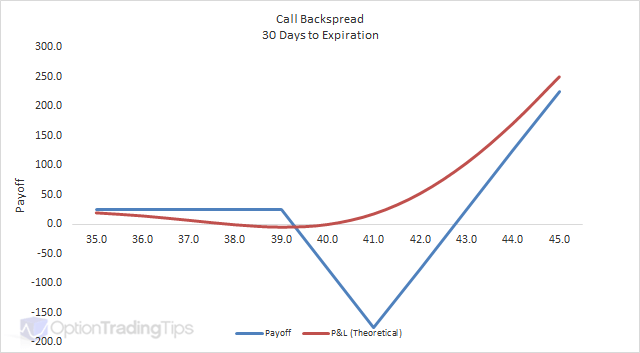
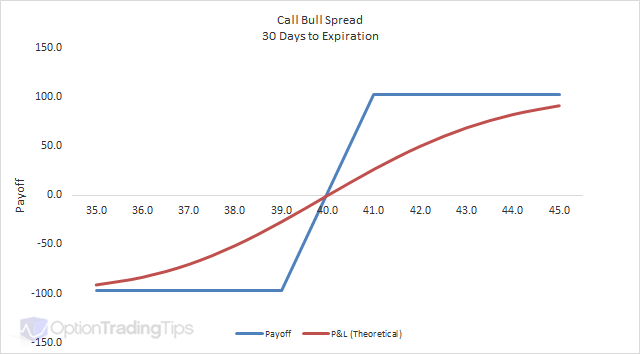
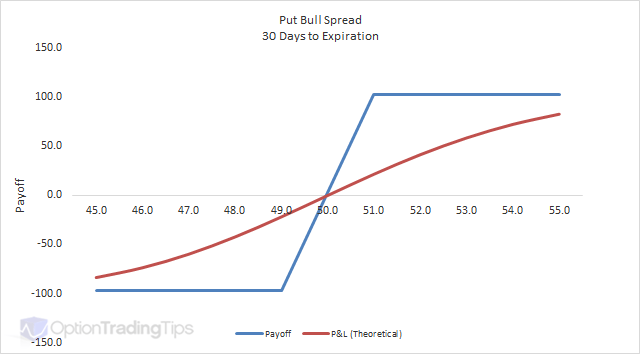
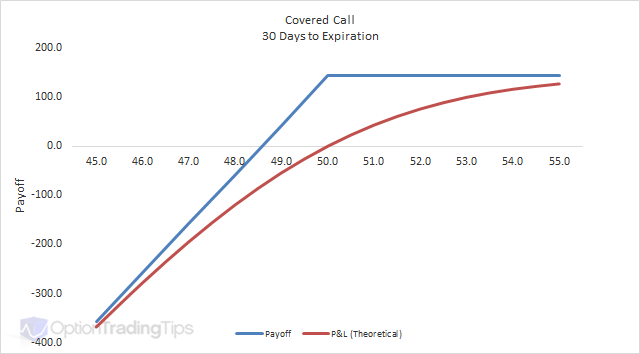
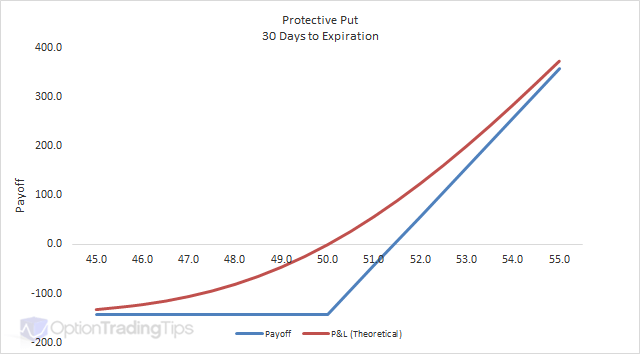










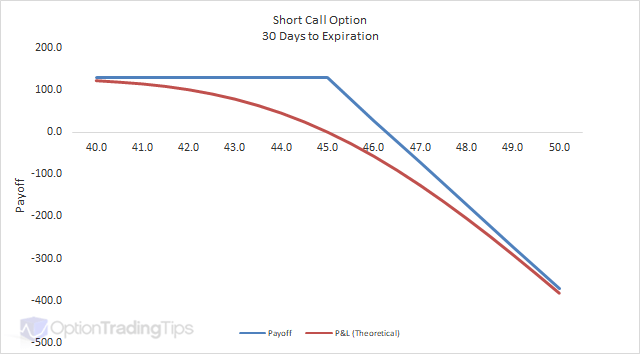
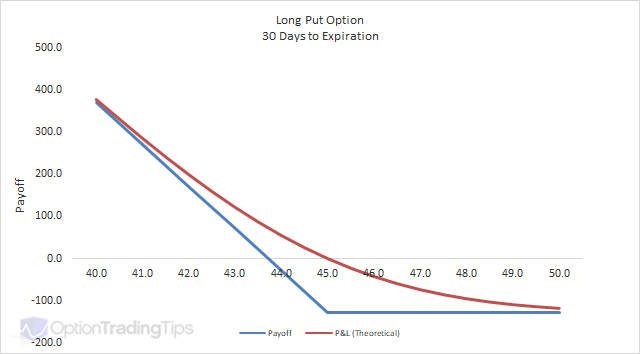
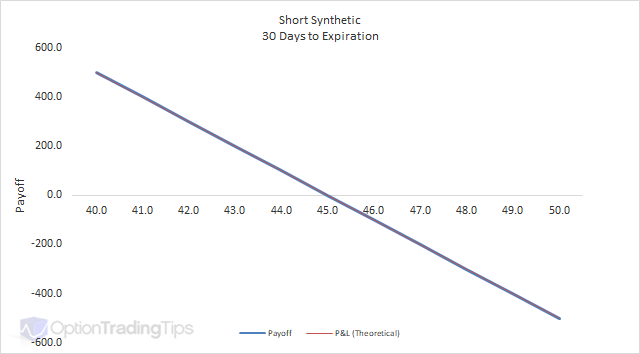
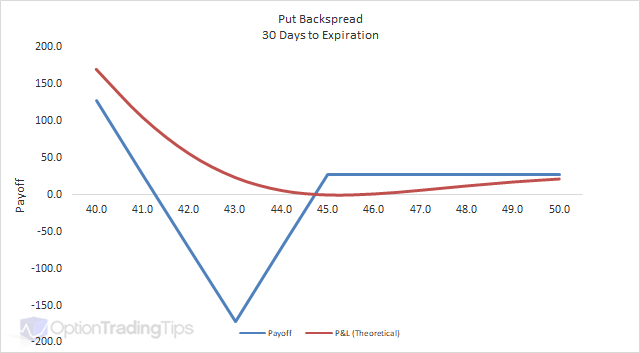
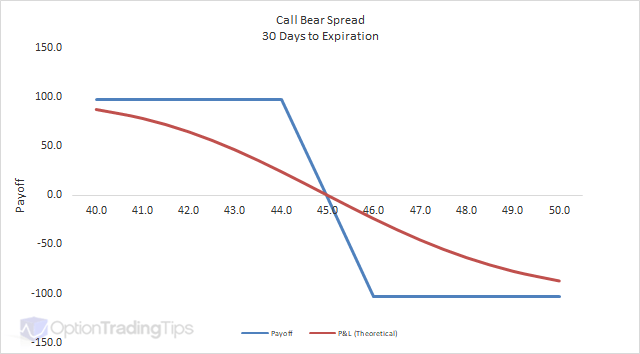
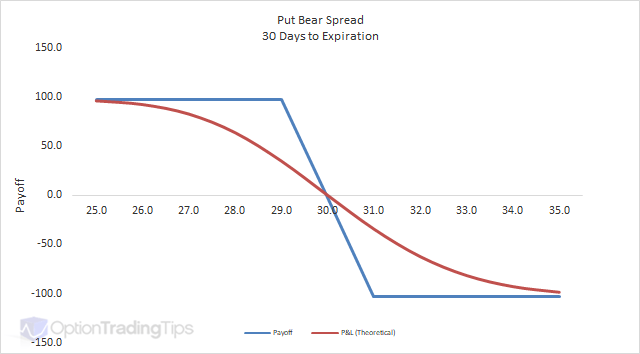
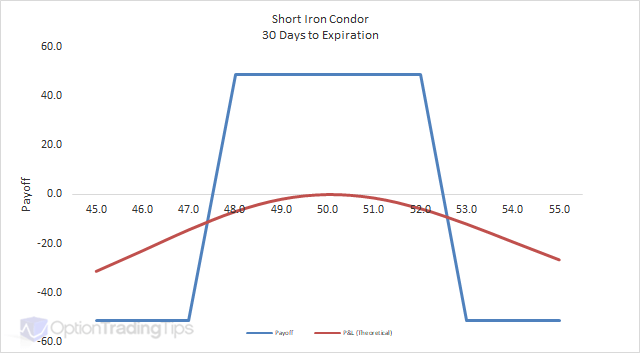

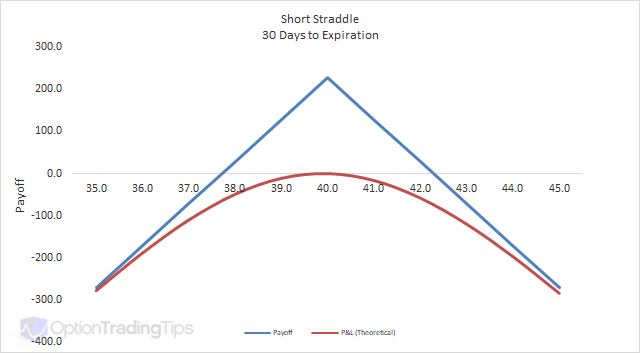
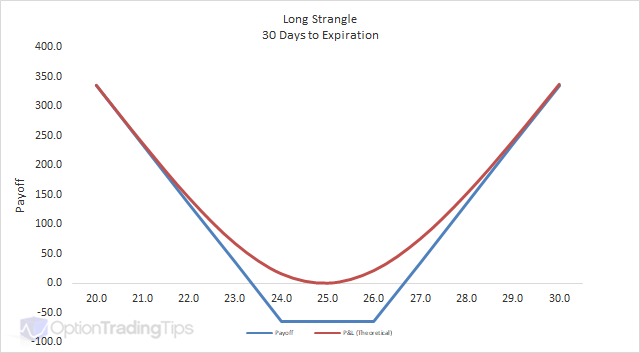
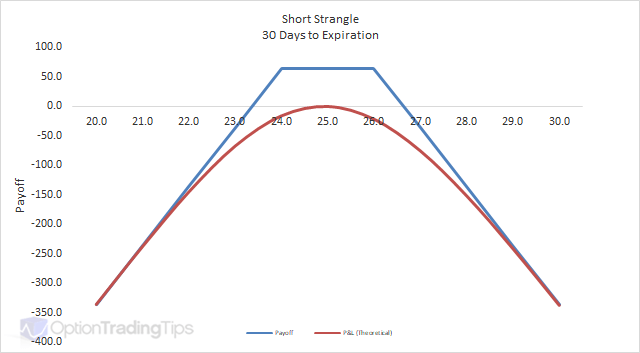

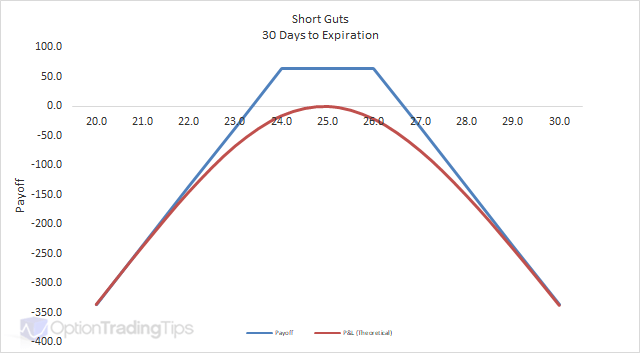
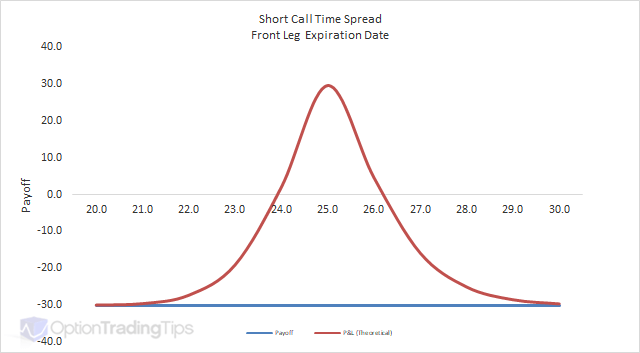
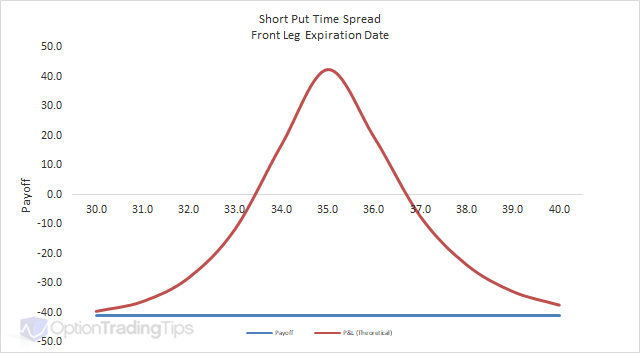
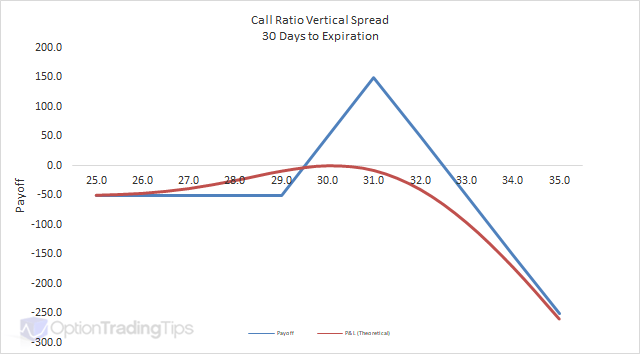
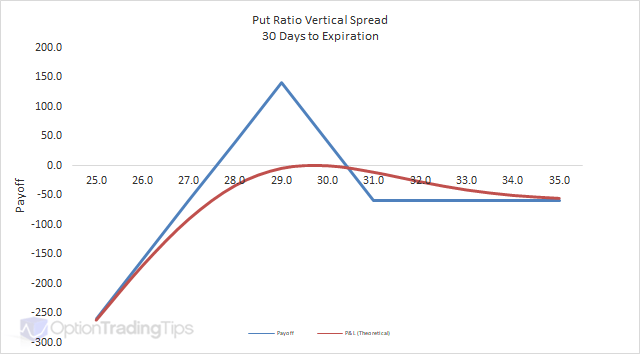

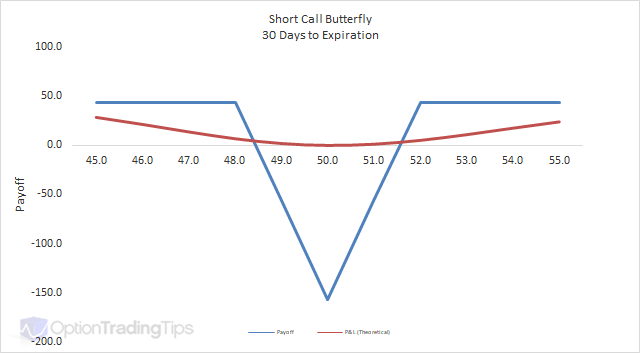

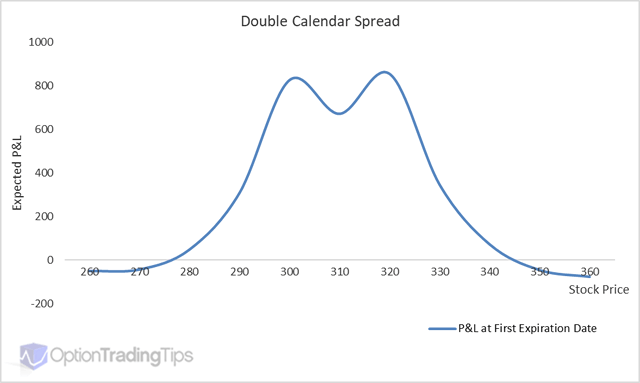
Generally, an Option Strategy involves the simultaneous purchase and/or sale of different option contracts, also known as an Option Combination. I say generally because there are such a wide variety of option strategies that use multiple legs as their structure, however, even a one legged Long Call Option can be viewed as an option strategy.
Under the Options101 link, you may have noticed that the option examples provided have only looked at taking one option trade at a time. That is, if a trader thought that Coca Cola's share price was going to increase over the next month a simple way to profit from this move while limiting his/her risk is to buy a call option. Of course, s/he could also sell a put option.
But what if s/he bought a call and a put option at the same strike price in the same expiry month? How could a trader profit from such a scenario? Let's take a look at this option combination;
In this example, imagine you bought (long) 1 $40 July call option and also bought 1 $40 July put option. With the underlying trading at $40, the call costs you $1.14 and the put costs $1.14 also.
Now, when you're the option buyer (or going long) you can't lose more than your initial investment. So, you've outlaid a total of $228, which is you're maximum loss if all else goes wrong.
But what happens if the market rallies? The put option becomes less valuable as the market trades higher because you bought an option that gives you the right to sell the asset - meaning for a long put you want the market to go down. You can look of a long put diagram here.
However, the call option becomes infinitely valuable as the market trades higher. So, after you break away from your break even point your position has unlimited profit potential.
The same situation occurs if the market sells off. The call becomes worthless as trades below $37.72 (strike of $40 minus what you paid for it - $2.28), however, the put option becomes increasingly profitable.
If the market trades down 10%, and at expiry, closes at $36, then your option position is worth $1.72 ($172). You lose the total value of the call, which was priced at $1.14 and cost $114, however, the put option has expired in the money and is worth $4.00 an option - or $400. Subtract from this the total amount paid for the position, $228 and now the position is worth $172. This means that you will exercise your right and take possession of the underlying asset at the strike price.
This means that you will effectively be short the underlying shares at $40. With the current price in the market trading at $36, you can buy back the shares and make an instant $4.00 per share for a total net profit of $286 per share on the put leg. Then subtract the other $114 for the call leg and your total net profit is $172.
That might not sound like much, but consider what your return on investment is. You outlaid a total $228 and made $172 in a one month period. That's a 75% return in a one month period with a known maximum risk and unlimited profit potential.
This is just one example of an option combination. There are many different ways that you can combine option contracts together, and also with the underlying asset, to customize your risk/reward profile.
You've probably realized by now that buying and selling options requires more than just a view on the market direction of the underlying asset. You also need to understand and make a decision on what you think will happen to the underlying asset's volatility. Or more importantly, what will happen to the implied volatility of the options themselves.
If the market price of an option contract implies that it is 50% more expensive than the historical prices for the same characteristics, then you may decide against buying into this option and hence make a move to sell it instead.
But how can you tell if an options implied volatility is historically high?
Well, the only tool that I know of that does this well is the Volcone Analyzer. It analyzes any option contract and compares it against the historical averages, while providing a graphical representation of the price movements through time - know as the Volatility Cone. A great tool to use for price comparisons.
Anyway, for further ideas on option combinations, take a look at the navigation in the side bar and see what strategy is right for you.
PeterJune 7th, 2020 at 3:50am
Hi Kamal,
Yes, you can use the calculator for any option. Can you share an example...i.e. what parameters are you using?
Peter.
KamalJune 6th, 2020 at 6:52am
Hi,
How to use the option calculator for BankNifty and Nifty option pricing. The fair price values are way higher than the market values. Could you guide on the same.
BR
Kamal
PeterDecember 6th, 2016 at 7:19pm
Hi Luciano,
Yes, it represents your P&L movements today when the stock price changes by the amount on the x-axis.
LucianoDecember 6th, 2016 at 7:22am
Hi Peter,
Thanks for your help.
So does the pink line represent the P/L of my position today? I mean the P/L that I should have if I close the strategy today?
Thank you and regards.
Luciano
PeterDecember 1st, 2016 at 5:15pm
Hi Luciano,
The pink line represents the change in the value of the position relative to the current theoretical price.
At the center of the graph the pink line will always be zero because if you bought/sold the spread now at the current market price you will not have made or lost anything. But if the market price moves, which is represented by the x-axis your estimated (theoretical) P&L will change by the amount illustrated by the pink line - all other things being equal.
As the expiration date approaches, the pink line moves closer to the blue/payoff line. This line, at the expiration date, will be the most you can gain or lose for each corresponding x-axis (stock price) point.
Hope this is clear, please let me know if not.
LucianoDecember 1st, 2016 at 8:48am
Hi Peter,
could you please explain me what is the pink line in your graph (P&L+60 days) and in the Option Trading Workbook spreadsheet (which is called: Current Theoretical P&L Relative to Underlying Price Changes)?
You did a great job for newbies like me! Thank you.
Luciano.
PeterNovember 18th, 2015 at 3:59pm
Hi Renee, yes they are already added as either long or short i.e. Long Straddle and Long Strangle.
ReneeNovember 17th, 2015 at 8:55pm
Could add Strangle or Straddle?
Igwe Zachary GithaigaMarch 30th, 2014 at 3:35am
so,what are the strategies in option trading
beeFebruary 25th, 2014 at 4:05pm
If I've actually short a stock and it now is trading higher, is there any option repair strategy I can use to limit my loss? Most option repair strategy only gives example starting out with a long position on a stock.
PeterDecember 3rd, 2013 at 2:52am
Hi Terry,
Aplogogies for the delayed response!
The ATM point will be at the "forward" price, which will be slightly higher than the stock price depending on the interest rate. If interest rates are zero then the ATM price will be the stock price.
I'm not really sure what the best volatility to use actually is. Some prefer to stick to a one year rate while others will use an historical level appropriate for the expiration of the options.
What is the website you're looking at for the vols?
Terry BNovember 25th, 2013 at 5:21pm
Hello, just downloaded your spreadhseet. Awesome stuff.
Two questions:
I'm, mainly interested in the deltas for my particular use.
a) For the default model stock price of $25.
I noticed that the at the money calls were at .52
and the at the money puts were at -.48
Shouldn't the .calls be at .50 and the puts at -.50
Also, I came across a site that post's historical volatilities for a stock.
1mo, 2 mo, 3mo, 6mo, 1yr, 2 yr, and 3yr.
Which would be the best to plug in to your spreadsheet to calculate most accurate delta's. The shortest term 1mo ?
thanks .... great spreadsheet
JayantOctober 15th, 2013 at 12:23am
Dear admin can u suggest me any new strategy except these strategies..i want some new strategy, m well known all this strategies because m the trainer of options market in kolkata and m also certified with NSE.
PeterAugust 26th, 2013 at 6:18pm
Hi Steve,
It is the theoretical P&L calculated with 60 days left to maturity.
SteveAugust 26th, 2013 at 7:33am
What exactly is the pink line in the diagrams? It appears to be some average over time but I can't find a definition anywhere.
alvaro francesApril 15th, 2012 at 5:03pm
Amit Bhutani hello, please can you explain the strategies that spelling on March 17, 2012 the day that I describe below, thanks
1)Long Combo + Nifty Short
2) Combo corto + largo Nifty 2)Short Combo + Nifty Long
3) Put / Call Ratio spreed 3)Put / Call Ratio spreed
4) Coloque el oso spreed / Spreed Bull de llamadas. 4)Put bear spreed / Call Bull Spreed.
PeterMarch 27th, 2012 at 5:05pm
Hi James,
Right - the OptionTradingWork book is currently onlt Black and Scholes. For American options you can use the Binomial Model - there is a spreadsheet on the Binomial page.
JamesMarch 27th, 2012 at 7:02am
Hi I've used the Option Trading Workbook.xls and compared it to bloomberg valuations and it is slightly out. Specifically I'm talking about american options on the ES mini contract, eg ESU2C 1350 Index
Does this pricer work for american options, or is it just for european?
Any chance we get an american options enabled one?
:-)))))
PeterMarch 26th, 2012 at 7:47pm
Hi Rakesh,
You can write a call/put on the basis of;
a) creating a naked position because you are bullish/bearish on the underlying
b) as part of a combination such as a covered call, which is used primarily to gain additional income on an existing stock position.
Amit S BhuptaniMarch 17th, 2012 at 1:12pm
Dear All,
Best strategy which I have come across.
1)Long Combo + Nifty Short
2)Short Combo + Nifty Long
3)Put / Call Ratio spreed
4)Put bear spreed / Call Bull Spreed.
Regards
Amit S Bhuptani.
PMS ICICI Sec Ltd.
RakeshMarch 17th, 2012 at 10:38am
Hi Peter,
I wanted to know the basics which I need to keep in mind before trading in "EXPIRY" ?
When we need to write a CALL/PUT ?
Thx
PeterFebruary 26th, 2012 at 4:44pm
Mmm, that's a tough question to answer here Rakesh ;-) I'd say your best bet would be to invest in a program like MultiCharts . MultiCharts can chart, scan and auto-trade stocks through many different brokers. Plus, it provides an easy to use scripting language that allows you to design and backtest trading ideas before risking real money. I have it and love it!
. MultiCharts can chart, scan and auto-trade stocks through many different brokers. Plus, it provides an easy to use scripting language that allows you to design and backtest trading ideas before risking real money. I have it and love it!
RakeshFebruary 26th, 2012 at 11:36am
Hi Peter,
What things I need to keep in mind before getting into intraday trading in STOCKS?
I also wanted to know the procedure of picking the right stock in intraday trading?
Thx
PeterFebruary 23rd, 2012 at 5:17pm
Hi Joel,
It depends on what you define as the ATM strike. If you simply say that ATM strike is the strike closest to the stock price, then yes the call will normally have a higher premium than the put. However, the ATM strike should really be driven by the "forward price" of the stock.
As option contracts carry the right to exercise at a point in the future, their value is first based on the future price of the stock, which is the stock price plus the cost to hold the stock (cost of carry or interest rates) less any dividends received during that period.
As you apply the interest rates and dividends to the current stock price you will calculate a price different to the stock and this is the true ATM price. For retail traders who are simply eye balling the option screen to see where the ATM is, just using the stock price is good enough, which is why they've noticed that the call premiums are higher than the puts as the true forward price is actually higher than the stock price.
Call, put and stock prices for the same strike are all related and cannot violate put call parity. Take a look at that link to read more and let me know if I've missed anything or if you have any questions.
Joel H.February 23rd, 2012 at 8:58am
I just finished reading a book on options and one of the discussion points was that an ATM call will always have a higher premium than a put at the same strike. If I find a put which has a higher premium then a call at the same strike price, is this unusual? Is there a way to take advantage of such a situation? Is it fair to assume that this is a temporary situation? Thanks in advance.
PeterFebruary 23rd, 2012 at 2:28am
Hi Ash,
If the option is out-of-the-money then, yes, it will begin to lose value very quickly as expiration approaches. If you are happy with any profit you've made already then you should exit while you can.
AshFebruary 23rd, 2012 at 1:39am
Hi Peter, I have a question on when to close out my position on a call option. I currently have a April call option and i wanted to know if there are any best practices around when to closeout your position if you are not planning on purchasing the stock at expiry?. I am asking this because as time goes by the price of options go down. It is end of feb now and my options expire in Apr. Your input is appreciated.
PeterFebruary 19th, 2012 at 5:04pm
Hi Rakesh,
If you want limited risk and unlimited profit potential then you are best looking at positions like long call, long put, long straddle, long strangle etc - these are strategies where you are net long options.
RakeshFebruary 19th, 2012 at 8:59am
Hi,
Can anybody tell me the statergies that I need to keep in mind before trading in "Options"? So that the risk percentage is nominal and the probality of profit is high.
PeterFebruary 12th, 2012 at 5:09pm
Hi eh,
This strategy is called a short guts and is similar to a short strangle except you are shorting a put with a higher strike price, where a strangle sells the put with a lower strike price.
The payoff calculation is a little different also: with a short strangle the max profit achievable is the premium received. But with a short guts the max profit is the net premium received minus the difference between the two strikes, so in this case $5 (multiplied by whatever multiplier the index carries).
Can I ask why would choose this approach instead of selling the 1100 call and the 1050 put?
PeterFebruary 12th, 2012 at 3:48pm
Hi Varun,
Do you mean selling a call and a put together at the same 130 strike price i.e. a short straddle?
If so, and the combined premium for this trade was 10, with the underlying now at 150, then;
Net premium received: +10
Short Put: worthless
Short Call: -2,000
Total: -1,990
With the stock at 150 you'll be assigned the stock at a price of 130 meaning an immediate loss of 20, which multiplied by the multiplier of 100 leaves you with a 2,000 loss for that leg of the position. Take away the premium already received and you're left with -1,990.
ehFebruary 11th, 2012 at 3:48am
Short 1 lot, Strike Price 1050, Index CALL at 25
and
Short 1 lot, Strike Price 1100, Index PUT at 30
What is the risk in this strategy ?
Position held till expiry & automatically settled by exchange at iNDEX spot price on expiry day.
VarunFebruary 10th, 2012 at 1:22am
Hi,
I am new to this and this site has been a big help ,
I wanted to clarify one thing .
Considering that i am bullish on the market and would like to take a profit from it
I sell a put call of a stock X with a strike price of 100 the stock is trading at 130 and i assume it will end close to 150
I will sell this
Put call
Spot = 130
Strike price Premium
100 10
Expected Price at expiry
150
so the person to whom i am selling would not be excecising his option and i would be able to make money.
Please do clarify whether this is possible or not
danielyeeDecember 22nd, 2011 at 7:08am
Peter
If I buy a call e.g price $50 if the market start at 9.30 then suddenly drop is this mean all my money gone?
PeterDecember 21st, 2011 at 3:52pm
You should be able to see the last price - even if the market is closed.
danielyeeDecember 21st, 2011 at 4:38am
Thanks and when I click e.g AAPL per contract value N/A
Does this mean I need to wait until market open to see the price?
PeterDecember 20th, 2011 at 5:05pm
You can take a look at the option prices on Yahoo.
danielyeeDecember 20th, 2011 at 5:15am
Peter
I'm a new guy here...can you teach me where I can see if I want to buy e.g AAPL option trading per contract how much? Thanks.
PeterDecember 18th, 2011 at 3:52pm
Yes.
JorgeDecember 16th, 2011 at 4:35pm
Peter,
What if I sell 5000K put on the day of expiration of the contract and the stock does not move significantly in value to exercise the contract for who ever bought it.
Do I get to keep the commission?
PeterSeptember 29th, 2011 at 12:15am
You won't be able to roll over at the same price - if you want to keep a position in the same strike price, you will have to sell (buy) out of the front month contract and buy (sell) into the back month at the current market prices.
AnkurSeptember 29th, 2011 at 12:00am
Thanks Peter. Further, if I need to rollover my position to next month, then do I need to pay some extra premium or can I rollover at the same price?
Thanks
PeterSeptember 28th, 2011 at 6:04pm
Yes, exactly. You would close your position for a profit without having to wait until expiration to exercise the option.
AnkurSeptember 28th, 2011 at 8:00am
Hi Peter,
Really good information on Options. I had one question - Suppose I buy a an option Call 5000 for Rs 30 whereas the index is at 4950. Within 2 hours, index moves to 4990 and option premium is Rs 35. Can I sell the contract now and earn Rs 5 per lot as profit though the index did not reach 5000?
Thanks
PeterSeptember 18th, 2011 at 11:37pm
Risk-free? Me too, please let me know when you find such strategies ;-)
aparnaSeptember 18th, 2011 at 11:34pm
I want to learn risk-free option trading in Indian market. Suggest me some website for it.
NAGESHSeptember 4th, 2011 at 11:30am
First time I found more information about options. Thanks a lot.
PeterAugust 3rd, 2011 at 5:55pm
Both futures and stocks have a delta of 1 so hedging with a future is much the same as hedging with a stock.
Raj baghelAugust 3rd, 2011 at 1:08am
is there any help for hedging in future with respect to call/put.
PeterAugust 1st, 2011 at 5:48pm
Please see the in-the-money page.
ArulAugust 1st, 2011 at 7:02am
what is in the money call & put?
PeterMay 12th, 2011 at 11:05pm
Hi spinnerrobert, yes, you can exit an option position at any time prior to the expiraton date.
PeterMay 12th, 2011 at 11:04pm
Hi Azaragoza, you can check out my option pricing spreadsheet for the formula.
spinnerrobertMay 12th, 2011 at 8:29pm
My qestion is let say i own akam and buy option for either put or call. I want to sell it right after i purchase the contract let say within one hour. Is that allow?
azaragozaMay 5th, 2011 at 3:15pm
what is the formula you use to optain the PnL charts, do you have an example?
PeterFebruary 28th, 2011 at 3:05am
Hi Jai, it really depends on what market you're looking at and what your view is of this market i.e is it trending upwards, is there a lot of volatility etc?
That's what's great about options - the strategies vary according to lots of factors.
JaiFebruary 24th, 2011 at 11:14pm
hi
Would you tell which are the best available statergies in the option market now
S.VivekFebruary 7th, 2011 at 4:48am
can you tell me short on options and how its works ?
UOGDecember 13th, 2010 at 1:26pm
Hello, I think your blog is epic. Congrats.
PeterDecember 7th, 2010 at 1:25am
You'd need to check with your if they can provide this service. I know that Interactive Brokers provide an API to plug external systems into that operates over the Internet.
DAJBDecember 6th, 2010 at 3:38pm
Hi,
If one is using computational systems as an aid to decision making, then is there a source to receive streaming real time prices over the internet in a way which could be easily integrated into a system?
Thanks,
D
PeterOctober 31st, 2010 at 3:53am
Hi Anon,
Premium is the price of the option as it is traded in the market. Commissions (aka brokerage) are what you pay to your broker for executing your trade.
1. You would lose the premium plus any commissions paid to the broker, so $32.95
2. Depends on where the stock is in relation to the strike price. If you were very confident that the stock will not be above the strike price by the expiration date, then you would sell the option back at whatever price you could get and the loss would be $32.95 less (price sold for + $2.95).
3. You will only lose the premium paid (plus commissions) i.e. $32.95.
Hope this helps. Let me know if anything is unclear.
AnonymousOctober 29th, 2010 at 10:16pm
I am using Thinkorswim. I haven't seen about premium. So, I am wondering that what the differences between "premium" and "commission" are?
I bought long call GLD at 128 and expire Oct 2010, I got info from Thinkorswim; max profit = infinite, max loss = 30(not including possible dividend risk), cost of trade including commissions = 30+2.95 = 32.95.
My question are;
1. If the strike price expired Oct 31, 2010 is 125, how much would I loss (30 or 2.95 or 32.95)
2. Before the end of expiration, I thought that the market would go down. Which one should I pick between "sell it before expiration" or "do nothing in order to let it expired." How much does it cost of both of them?
3. If the strike price expired Oct 31,2010 is 130, what will happen if I do nothing and let it expired?
Thank you
Sam
PeterOctober 21st, 2010 at 4:21am
Depends on the country and what your main form of income is I'd say, whether the trade is treated as capital gains or income.
syrusOctober 21st, 2010 at 2:08am
What is the tax liablity of a option trading when option is exercised. whether it will be profitable after payment of commission to broker and tax. is there any safe net to safeguard profit
PeterOctober 18th, 2010 at 5:15pm
Yes, you can surely exit an option position by trading out of it prior to the expiration date.
Kartik October 18th, 2010 at 8:03am
This explaination talks about option in case of expiry but what in case of trade which takes place in between the expiry date.
PeterSeptember 17th, 2010 at 2:26am
Hi Meghna, just because there are no bids out there doesn't mean there aren't any buyers. You can just enter a sell order into the market and if the price is right a market maker will take it.
MeghnaSeptember 17th, 2010 at 2:19am
Hi Peter, I know that i can reverse the position by selling in the same market. But in electronic trading generally bids are not available for deep ITM / OTM options, while in OTC market I can easily reverse the position by paying some what higher to the broker. Hence kindly clarify how to deel with such situation in e-trading like "Indian Nifty".
PeterSeptember 15th, 2010 at 6:39am
Yep, you can just reverse the option position by selling the same option contract in the option market.
MeghnaSeptember 15th, 2010 at 5:25am
HI, Say if I am buying an in the money European option with an expiry of 4 months and If the option is deep ITM or OTM during at the end of 2nd month and if i want to crystallize my profits than is there any way out for it?
PeterSeptember 5th, 2010 at 5:15am
It's hard to beat Interactive Brokers on brokerage and platform functionality. Although I've heard that Think or Swim have a great platform also.
rameshSeptember 5th, 2010 at 12:32am
Which firm has best trading tools and low commissions?
PeterSeptember 2nd, 2010 at 5:55pm
I use and can recommend Interactive Brokers. They are a US based company and you don't have to live in the US to open an account with them.
NaZZSeptember 2nd, 2010 at 7:02am
I stay in Thailand(in Asia), how can I start to trade because I do not any account with any broker in USA. Can you suggest me broker's web site to open account and trade.
PeterAugust 29th, 2010 at 5:07pm
Hi Sam, thanks for the feedback!
Yes, I think that simple naked long positions are still useful and obviously have the most bang for buck so to speak. It's just that option traders need to understand the factors that affect an option's value - specifically volatility.
Often you may purchase a call option and even though the stock does rally the call option won't gain any value - or could even lose value in the market. This is because the drop in implied volatility has played a larger role in the option's value than the move in the stock price.
This can be discouraging to new option traders. But this doesn't mean that naked call and put buying should be avoided...just needs to be understood.
SamAugust 29th, 2010 at 10:41am
hi Peter,
it's really nice website you have. Anyway, talking about options strategy , based on your experience, is it still useful using only simple long call or put ? because i heard that these are useless, mostly worthless.
PeterAugust 29th, 2010 at 5:44am
Hi Rajesh, are you located in the US? If so, Options University used to provide in person option courses and training. Otherwise, you can also have a look at the Members Area for our online video courses.
used to provide in person option courses and training. Otherwise, you can also have a look at the Members Area for our online video courses.
rajashekargoudAugust 27th, 2010 at 12:11pm
i am interested option please suggest me good insitituion for traning and from where i should start option(instial investments)and for dealing in option we should have any experiance
PeterAugust 26th, 2010 at 12:31am
Hi Raju, thanks for the feedback...if you have any other suggestions for the site, please let me know.
raju jeeAugust 25th, 2010 at 9:59pm
hi.. jst go thru ths site and m stant abut knowing option stategy. plz teach me more and CONGRAT 4 ur valuable meteriel.
PeterAugust 18th, 2010 at 6:57pm
Hi Dale, HPQ is currently at 41.36 so your put options are ITM for the buyer, which means you're looking at being exercised and taking delivery of the stock at $45.
With expiration tomorrow your put has a delta of -1, which means you're effectively long the stock now.
(use Option-Price.com for Greeks)
What you do now depends on your view of HPQ. By selling a put, I would say that you must have been somewhat bullish in the first place to be prepared to hold the stock at $45...although HPQ has take a sharp dive lately, maybe your view has changed. If that's the case you could sell out of the puts tomorrow and cut your losses on this trade.
Or, if you want to continue holding the stock, then why not have a look at writing some September $43 calls? You will limit your gains if the stock gets there but will have the immediate gain of income from the premium received.
Dale BrooksAugust 18th, 2010 at 6:00pm
I am short the hpq jan 12 45 put, what is a good stategy to limit my risk on the down side ? Should I go long the same put at the same strike ? Thank you Dale
PeterAugust 14th, 2010 at 4:00pm
Hi Amit, Options University used to do this kind of training, you might want to check them out. Or, the Members Area here has a bunch of video training material of live option trading.
used to do this kind of training, you might want to check them out. Or, the Members Area here has a bunch of video training material of live option trading.
Amit SharmaAugust 14th, 2010 at 2:06pm
Want to learn Option Strategy with prctical Knowledge Contact : 9818759927, 9211663645
PeterAugust 14th, 2010 at 6:28am
You could try Options University
shamsul idrisiAugust 13th, 2010 at 12:27pm
i want to learn option trading please suggest me some good training center
PeterAugust 6th, 2010 at 2:00am
Interesting...do you know of a good place to source the put/call ratio numbers?
BradAugust 6th, 2010 at 12:44am
I think that the best overbought oversold indicator and a reversal signal is when lets say a stock is in an up trend than for a couple of days in bound-range.
the signal comes with a sudden PUT/CALL ratio change with a significant volume
AUMKARAugust 3rd, 2010 at 1:21pm
What will be happen if the NIFTY STRAIT go 100+
anjanappaJuly 30th, 2010 at 2:04am
call opt put optns strategies, i am very succsed in this field pl anybody try and earn get more money thank u
PeterMay 26th, 2010 at 12:57am
No, OTC can mean a transaction between two parties for any type of financial instrument - even stocks can be traded OTC.
MariaMay 25th, 2010 at 9:16am
When somebody talks about OTC Commodities: does this only mean Commodities options?
PeterMay 11th, 2010 at 6:34am
It's where you buy/sell the underlying to reduce your delta exposure.
piyulMay 7th, 2010 at 8:24am
what is hedging stratges
roshanMarch 27th, 2010 at 8:18am
wat is option101
PeterJuly 19th, 2009 at 8:18am
Hi Yogesh, any strategy that has unlimited updside profit potential e.g. Long Straddle, which allows for unlimited profit if the stock trades up or down.
yogeshJuly 18th, 2009 at 5:11am
which strategies use for give the more profit plz reply the answer
priyalMay 9th, 2009 at 4:25am
for understanding option u have to read more books & be practical
VineshMay 6th, 2009 at 9:55pm
Hi, i am Indian Investor and trader. I have just this website few days back and i want to tell you this is best site on Options Trading and imparting knowledge on the subject. Congratulations...
AdminDecember 8th, 2008 at 3:21am
Hi Lisa,
Yes, you sure can trade online.
I use http://www.interactivebrokers.com who have a great font end and pretty low brokerage. You could also try http://www.tradeking.com
lisa AscoleseNovember 22nd, 2008 at 8:56am
Who would I call if I wanted to trade options. Is this something that I could do online?
chandiNovember 12th, 2008 at 7:00am
I want to know what r the Riskless Strategies in Option Trading. That will give money in any market condition.
AdminNovember 7th, 2008 at 7:03pm
Hi Prafulla,
Sorry, I don't understand your question. Could you be more specific please?
prafullaNovember 3rd, 2008 at 11:39am
what r the proces for invest on it.
Add a Comment